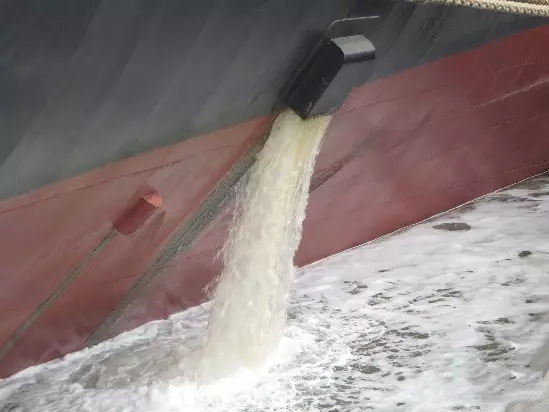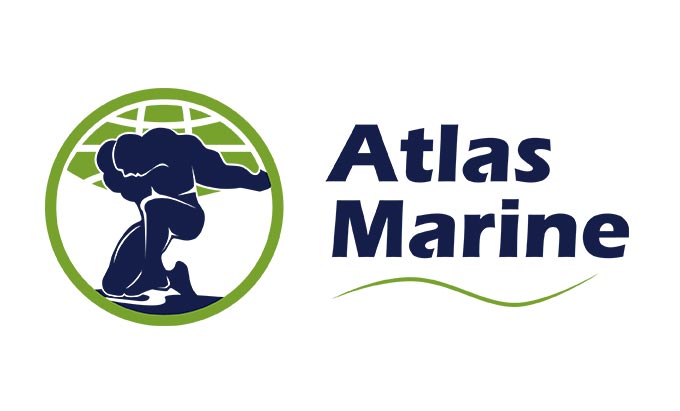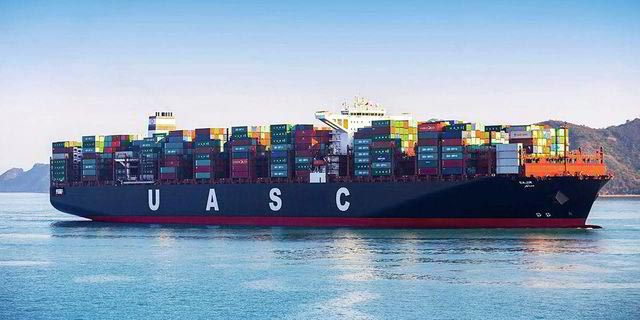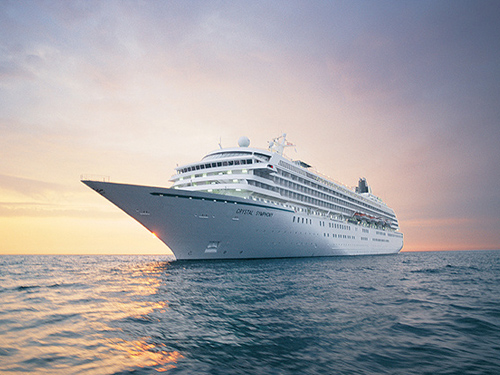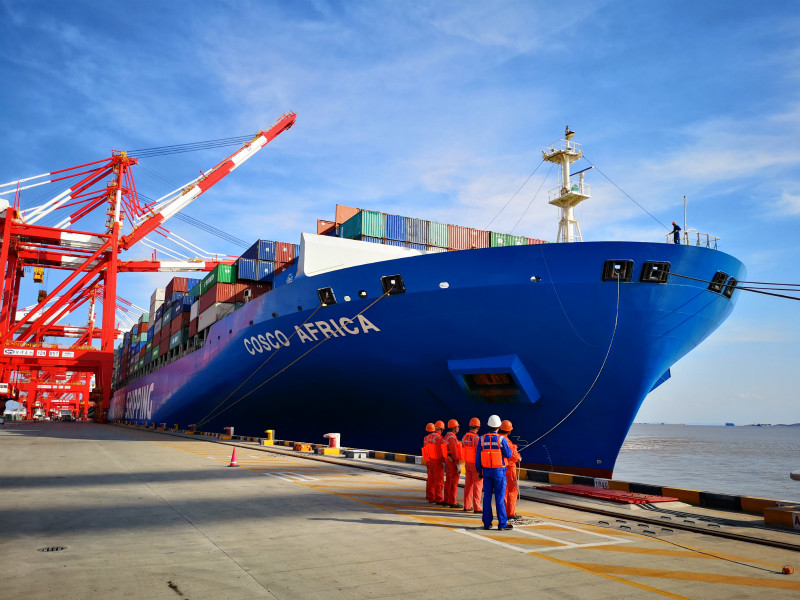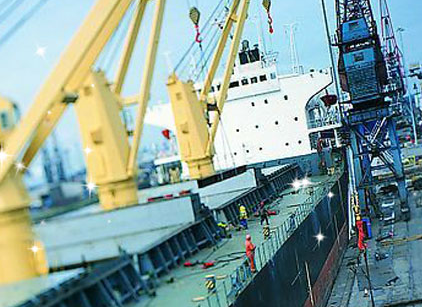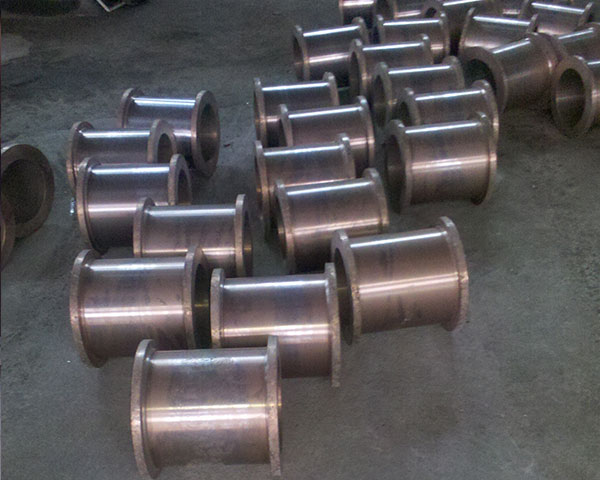The Ballast Water Convention officially entered into force in my country
- Categories:Industry News
- Author:
- Source:
- Time:2019-01-14
- Visits:0
[Summary]On January 11, 2019, the China Maritime Safety Administration issued a notice on the "Measures for Supervision and Administration of Ship Ballast Water and Sediment Management (Trial)".
The Ballast Water Convention officially entered into force in my country
[Summary]On January 11, 2019, the China Maritime Safety Administration issued a notice on the "Measures for Supervision and Administration of Ship Ballast Water and Sediment Management (Trial)".
- Categories:Industry News
- Author:
- Source:
- Time:2019-01-14
- Visits:0
On January 11, 2019, the China Maritime Safety Administration issued a notice on the "Measures for Supervision and Administration of Ship Ballast Water and Sediment Management (Trial)". Since January 22, 2019, the Ballast Water Convention has officially entered into force in my country.
The first article
In order to prevent harmful aquatic organisms and pathogens introduced by ships’ ballast water and sediments from causing pollution and damage to the ecological environment, human health, resources and property of my country’s waters, in accordance with the "Marine Environmental Protection Law of the People's Republic of China" and "Water Pollution Prevention and Control of the People's Republic of China" The Law, the Regulations on the Management of the Prevention and Control of Ship Pollution to the Marine Environment and other laws and regulations, and the 2004 International Convention on the Control and Management of Ships’ Ballast Water and Sediments (hereinafter referred to as the Convention), which my country has joined, formulate these measures.
Article 2
These Measures are applicable to international vessels sailing, berthing and operating in the waters under the jurisdiction of my country.
This approach does not apply to the following ships and offshore installations:
(1) Domestic ships, including ships sailing between the mainland and Hong Kong, Macau, and Taiwan ports;
(2) Design or build ships that do not carry ballast water;
(3) Fishing vessels, military vessels and official vessels;
(4) Ships sealed in ballast tanks without discharging ballast water;
(5) Offshore fixed and mobile platforms.
Units and personnel engaged in ship's ballast water and sediment management related operations in the waters under the jurisdiction of my country shall abide by these Measures.
Article 3
The Maritime Safety Administration of the People's Republic of China is responsible for the supervision and management of ship ballast water and sediment management throughout the country.
Maritime administration agencies at all levels are specifically responsible for the supervision and management of ships’ ballast water and sediment management within their jurisdiction.
Chapter II General Provisions
Article 4
The shipping company to which a Chinese ship belongs should incorporate the requirements of relevant laws, regulations and conventions on the management of ship’s ballast water and sediment into the safety management system.
The fifth
Ships should be equipped with relevant certificates such as the International Ballast Water Management Certificate, the Ballast Water Management Plan, and the Ballast Water Record Book. Ships installing ballast water management systems should also hold a copy or photocopy of the "Ballast Water Management System Type Approval Certificate".
Article 6
The "International Ballast Water Management Certificate" should be issued by the competent authority or its authorized ship inspection agency.
The Ballast Water Management Plan should conform to the actual operation of the ship and be issued by the competent authority or its authorized ship inspection agency.
The Ballast Water Record Book should at least include the time, latitude and longitude of the ballast water operation, and the type of ballast water operation. Ships can use electronic records, or merge the contents of the Ballast Water Record Book into other record books.
Article 7
Encourage port operators or units engaged in port services to build ballast water reception and treatment facilities to deal with the failure of the ship's ballast water management system or other emergencies that cannot meet the requirements of the Convention. Encourage companies engaged in shipyards or port services to build sediment reception and treatment facilities.
Chapter 3 Ship's Ballast Water and Sediment Management
eighth
In accordance with the requirements of the Convention, ships that need to replace ballast water should perform ballast water replacement in waters at least 200 nautical miles from the *near land and at least 200 meters in water depth; for those with a voyage less than 200 nautical miles, it can be at least 50 nautical miles from the *near land and the water depth is at least The 200-meter water area is replaced. Our country and its neighbors have agreed otherwise.
Article 9
For ships that need to treat ballast water in accordance with the requirements of the Convention, the content of living aquatic organisms in the ballast water discharged shall meet the following requirements:
(1) In each cubic meter of water, there are less than 10 living aquatic organisms with a small size greater than or equal to 50 microns;
(2) There are less than 10 living aquatic organisms with a small size of less than 50 microns and greater than or equal to 10 microns per milliliter of water;
(3) Toxic Vibrio cholerae has less than 1 colony forming unit per 100 ml; Escherichia coli has less than 250 colony forming units per 100 ml; Enterococcus has less than 100 colony forming units per 100 ml.
Article 10
The crew should be familiar with their ballast water and sediment management responsibilities, and manage the ballast water and sediment on board the ship in accordance with the requirements of the Ballast Water Management Plan.
The crew responsible for ballast water and sediment management should make a complete record and sign in the Ballast Water Record Book, and the captain shall sign each page after filling in each page. The records in the Ballast Water Record Book shall be filled out in the working language of the ship. If the language is not English, French or Spanish, each record shall have a translation in one of these languages. The ship should keep the used Ballast Water Record Book on board for two years, and then keep it in its own company for three years.
Article 11
Ships discharging ballast water should report to the local maritime administration 12 hours in advance. After berthing, the ship or its agent shall submit the Ballast Water Report Form to the local maritime administration when applying for port declarations for ships on international voyages (see appendix) 1). The report can be submitted in writing or in the form of electronic data upload in accordance with the requirements of the maritime administrative agency.
When an accident or defect that affects the ability of ballast water management is discovered, the ship shall immediately report to the local maritime management agency after arriving at the anchorage or port.
Article 12
For the ballast water management system used by the ship, the system design limit parameters should be compatible with the water environment in which it is operated. The ballast water management system installed on the ship should be type-approved by the competent authority or its authorized ship inspection agency. The ballast water treated by the water-carrying management system shall not cause secondary pollution to the environment.
Ships that intend to use port ballast water reception and treatment facilities as emergency measures for ballast water management, or ships that do not install ballast water management systems and only use port ballast water reception and treatment facilities to meet the discharge standards of the Convention, shall be approved by the supervisor Inspection by the agency or its authorized ship inspection agency.
Article 13
Ships with a length of less than 50 meters and a maximum ballast water capacity of less than 8 cubic meters may apply for ballast water management equivalent compliance with the maritime administration agency where the home port is located:
(1) Yachts used only for entertainment or competition;
(2) Ships mainly used for search and rescue.
Ships applying for equivalent compliance shall submit the following materials:
(1) Preventive measures to reduce the transfer of ballast water and the introduction of harmful aquatic organisms and pathogens;
(2) The operation plan for the regular cleaning of the ballast tanks to remove the sediment, including the implementation plan for the subsequent harmless disposal of the sediment.
Article 14
Ships performing ballast water replacement, treatment, or sediment disposal shall ensure the safety of ships and personnel. In the event of an operation that affects the safety of ships and personnel, the captain shall suspend ballast water and sediment operations as appropriate, and record the circumstances and reasons In the Ballast Water Record Book.
Article 15
Except for the following circumstances, ships shall not discharge or transfer ballast water and sediments mixed with other or regional ballast water and sediments, as well as untreated or untreated ballast water and sediments, in the waters under the jurisdiction of my country.
(1) In an emergency, the addition or discharge of necessary ballast water and sediment to ensure the safety of ships or rescue of life at sea;
(2) The accidental discharge or entry of ballast water and sediment caused by damage to the ship or its equipment.
Article 16
If the ballast water and sediments that have not been treated or that have not been treated up to the standard are discharged, the ship shall hand it over to the unit with the receiving and treatment capacity for receiving and processing.
The receiving and processing unit shall issue a ballast water or sediment receiving document to the ship (see Annex 2) after the receiving operation is completed, and the captain shall sign and confirm it. The ship shall keep the receipt documents together with the "Ballast Water Record Book". The reception and treatment of ballast water and sediment shall not cause secondary pollution to the ecological environment of the water area.
Article 17
Units engaged in the reception and treatment of ballast water or sediments shall be equipped with reception and treatment facilities that meet the relevant technical standards. The mobile ballast water or sediment receiving and treatment facilities on the water shall be inspected by the competent authority or its authorized ship inspection agency.
Chapter 4 Type Approval of Ballast Water Management System
Article 18
The ballast water management system type approval certificate shall be issued by the competent authority or its authorized ship inspection agency.
Ballast water management systems that use active substances should obtain final approval from the International Maritime Organization before issuing a type approval certificate; for ballast water management systems that do not use active substances, they must pass safety and environmental approval before issuing a type approval certificate. Acceptability assessment.
Article 19
The ballast water management system to be installed on a Chinese ship should apply to the competent authority or its authorized ship inspection agency for safety and environmental acceptability assessment and review.
Article 20
For ballast water management systems that use active substances, the system manufacturer shall submit preliminary approval and final approval application documents to the International Maritime Organization through the Maritime Safety Administration of the People’s Republic of China.
Article 21
The ballast water management system type approval test carried out by the competent authority or its authorized ship inspection agency shall comply with the requirements of the Convention and relevant regulations. During the test, no foreign aquatic organisms shall be introduced, and no living aquatic organisms shall be discharged into the water area with a concentration exceeding the prescribed concentration of the Convention.
Chapter 5 Exemption from Ballast Water and Sediment Management
Article 22
In any of the following circumstances, the ship or its agent may apply to the local branch maritime administration for exemption from ballast water and sediment management:
(1) Ships sailing only in the waters of my country and other designated ballast water management mutual exemptions;
(2) Ships that only sail in the waters under the jurisdiction of my country and on the high seas;
(3) Ships that only use potable water as ballast water;
(four) unmanned barge;
(5) Professional ships used for search, rescue and pollutant removal from ships.
Article 23
Ships or their agents applying for exemption from ballast water and sediment management shall submit materials as required including:
(1) Copy of "Ship Nationality Certificate" and "Ship Registration Certificate" (applicable to ships of foreign nationality);
(2) Description of the inability to implement ballast water and sediment management in accordance with the Convention;
(3) Measures taken to minimize the introduction of harmful aquatic organisms and the transfer of pathogens from ballast water and sediments;
(4) A declaration by the captain who promises to sail only in the exempt waters.
Article 24
For ships that meet the exemption conditions, the directly affiliated maritime administrative agency shall issue a "Exemption Certificate" (see Annex 3) and may grant an exemption period of not more than 5 years. Between the second and third years of the exemption period, the directly affiliated maritime administrative agency shall conduct an interim inspection of the ship's implementation of the exemption.
Article 25
The ship shall record the exemption in the Ballast Water Record Book. The exempted ships shall not be mixed with ballast water and sediment outside the exempted waters.
Chapter VI Supervision and Management
Article 26
The maritime administration agency supervises and inspects the management of ballast water and sediments of ships entering the waters under the jurisdiction of my country. The inspections include certification documents, crew members’ familiarity with ballast water management operations, operation of the ballast water management system, and ballast The reception and disposal of water and sediments, etc.
In any of the following situations, ballast water sampling and testing can be carried out in accordance with the requirements of the Convention and related technical standards:
(1) The certificate documents related to the management of ballast water and sediment are lost, expired or invalid, and the contents of the certificates related to the management of ballast water and sediments do not match the actual situation;
(2) The ship has not designated a crew member responsible for ballast water and sediment management, and the captain or designated crew member is not familiar with the duties or basic operations related to ballast water and sediment management, or has not performed such operations;
(3) Failing to use the ballast water management system in accordance with the Ballast Water Management Plan or operating instructions, and failing to report accidents or defects that affect the ship's ballast water and sediment management capabilities to the maritime administration;
(4) Failing to discharge ballast water and sediments in accordance with the provisions of these Measures, failing to report ballast water discharge to the local maritime management agency, and failing to submit the Ballast Water Report Form to the local maritime management agency;
(5) The ship is unable to provide evidence to prove that the management of ballast water and sediment on board meets the exceptions or accidental discharges required by the Convention;
(6) The operation of the ballast water management system exceeds the parameter range of the system design limit;
(7) Receiving a third-party report or complaint that violates the Convention or these Measures.
Article 27
Ships that violate the provisions of Article 26 of these Measures, if the maritime administrative agency finds that they do not meet the treatment standards of the Convention after rapid sampling and testing, maritime law enforcement officers shall take samples and send them to a laboratory with ballast water testing qualifications for detailed testing. The test report affixed with the laboratory seal issued by the laboratory can be used as the basis for administrative law enforcement by the maritime administrative agency.
For maritime administration agencies that do not have rapid testing capabilities, maritime law enforcement officers can directly take samples and send them to a laboratory with ballast water testing qualifications for testing.
Article 28
Laboratories engaged in the testing of ship's ballast water and sediments shall have metrological certification or accreditation by the China Accreditation Service for Conformity Assessment, and their testing methods shall adopt testing standards.
Article 29
Article 30
During the experience accumulation period of the Convention, the maritime administrative agency and other units entrusted by it may board the ship to collect samples of ballast water or sediment for test purposes, and the test results shall not be used as the basis for taking measures against the ship in accordance with Article 29 .
For ships that exceed the requirements of the Convention, they are allowed to use port ballast water reception and treatment facilities to dispose of ballast water.
In ports that do not yet have the ability to receive and treat port ballast water, the maritime administrative agency should allow ships to leave the waters under the jurisdiction of my country to replace and treat the ballast water before entering the anchorage or port again.
Chapter 7 Supplementary Provisions
Article 31
The meanings of the following terms in these Measures are:
(1) "Ballast water" refers to the water (including suspended matter) added by the ship to control trim, heel, draught, stability or stress.
(2) "Sediment" means the material that settles in the ballast water of the ship's tank containing ballast water.
(3) "Ballast water management" refers to a single or integrated mechanical, physical, chemical and biological treatment method to remove, harmlessly dispose of, avoid adding or discharging harmful aquatic organisms and pathogens in ballast water and sediments .
(4) "Ship's ballast water and sediment management related operations" refers to the type approval of ballast water management system, ballast water and sediment detection, ballast water and sediment reception and treatment and other related activities.
(5) "The competent authority or its authorized ship inspection agency" refers to the flag state competent authority or the ship inspection agency authorized by the competent authority.
(6) "Ballast water reception and treatment" refers to the use of shore-based or mobile ballast water reception and treatment facilities to receive ballast water on ships at anchorages or in port waters.
Scan the QR code to read on your phone
Contact us
Scan QR code

- World Alliance
- Tel +86-13961613397
- Top
© 2021 ATLAS MARINE TECHNOLOGY (CHINA) CO., LTD. Power by 300.cn



